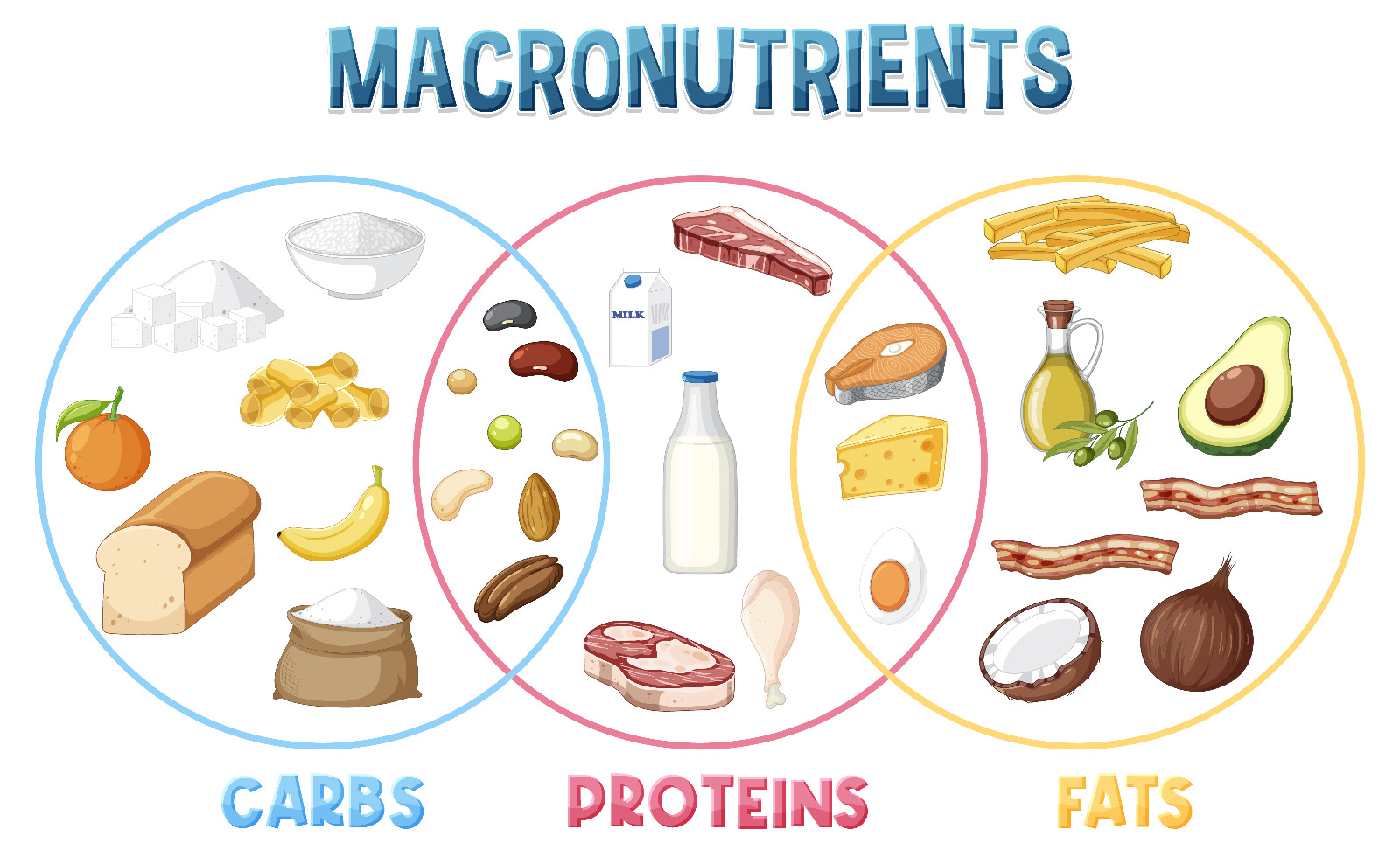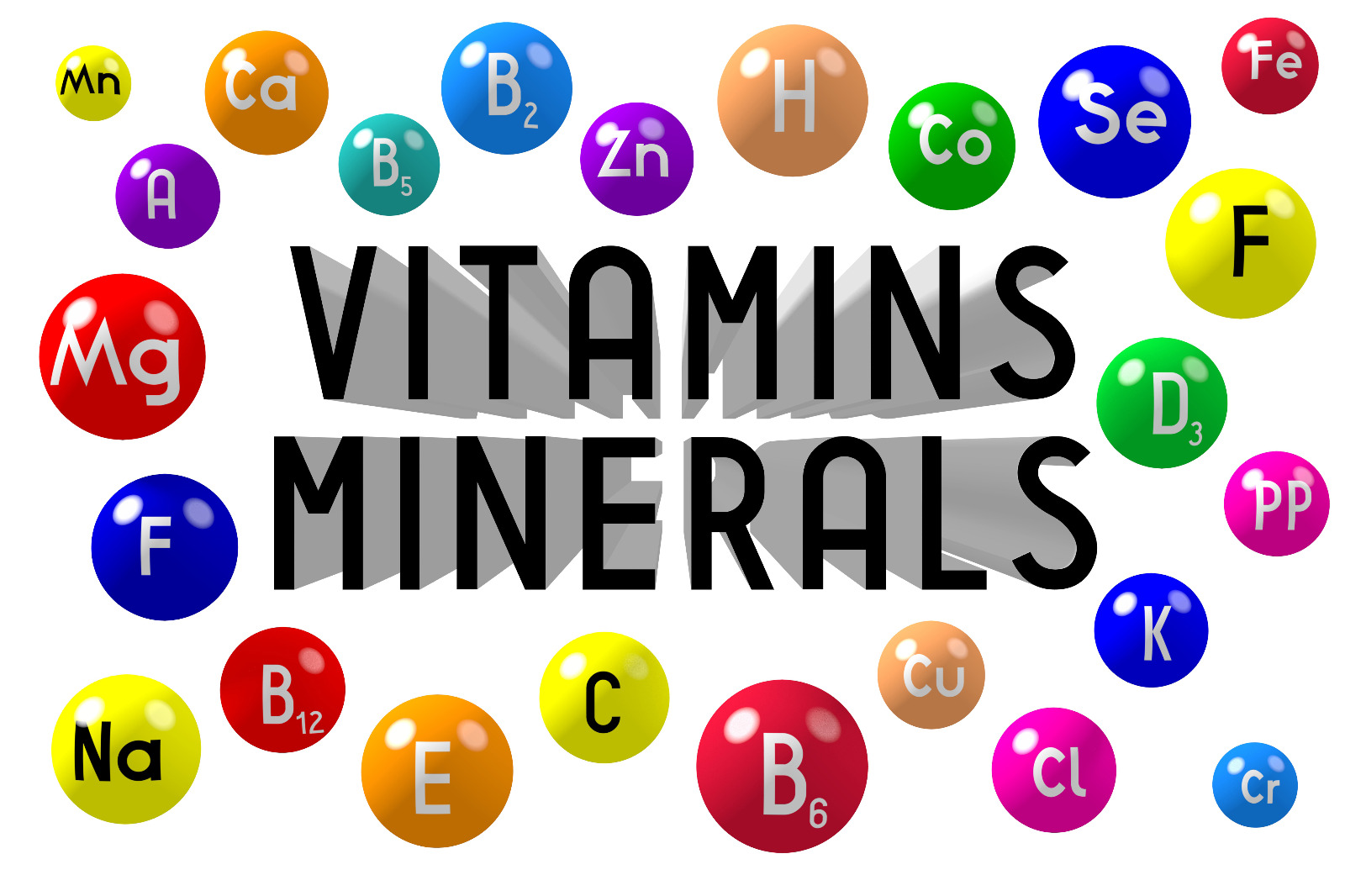Understanding Macronutrients and Micronutrients
What are Macronutrients?

Macronutrients are nutrients required by the body in large amounts to provide energy and support growth, metabolism, and other bodily functions. Macronutrients are essential components of food that support your body’s structure and functions. Three main types of macronutrients are proteins, fats, and carbohydrates, which provide energy to your body in the form of calories.
“Macro” comes from the Greek word makros, which means large. Macronutrients are typically measured in grams (g) and can be a useful way to track what you’re consuming. [2]
Carbohydrates: As the primary source of energy for the body, carbs break down into glucose promoting digestion and satiety. They are found in foods such as bread, rice, pasta, grains, fruits, starchy vegetables, legumes, and dairy products. They provide 4 calories per gram. [1]
Proteins: Proteins are made up of amino acids, some of which are essential and must be obtained from the diet. Essential for building and repairing tissues, producing enzymes and hormones, and supporting immune function. Foods such as meat, poultry, fish, eggs, cheese, cottage cheese, plain Greek yogurt, and tofu offer 4 calories per gram. [1]
Fats: Provide a concentrated source of energy, support cell growth, protect organs, and help in the absorption of certain vitamins. Fats are metabolized into fatty acids and glycerol, supplying fat-soluble vitamins A, D, E, and K. Foods such as nuts, seeds, oils, butter, sour cream, mayo, and cream cheese contain fats and provide 9 calories per gram. [1]
What are Micronutrients?

Micronutrients are nutrients required by the body in smaller amounts.Although micronutrients don’t supply energy, they are crucial for processes such as digestion, hormone production, various physiological functions, including disease prevention and overall health maintenance, and brain function. The two main categories of micronutrients are vitamins and minerals. [1]
Micros are much smaller measured values in terms of nutrition. “Micro” comes from the Greek word mikros, which means small. You measure most micronutrients in milligrams or even micrograms. [2]
Vitamins:
- Vitamin A: Supports vision and immune function. Found in carrots, sweet potatoes, and spinach.
- Vitamin C: Important for immune function and skin health. Found in citrus fruits, strawberries, and bell peppers.
- Vitamin D: Helps regulate the amount of calcium and phosphate in the body. Found in fortified foods, fatty fish, and exposure to sunlight.
- Vitamin E: Acts as an antioxidant. Found in nuts, seeds, and green leafy vegetables.
- Vitamin K: Important for blood clotting. Found in green leafy vegetables and broccoli.
- B Vitamins: Include B1, B2, B3, B5, B6, B7, B9, and B12, which support energy production and brain function. Fish, poultry, meat, eggs, and dairy products. Leafy green vegetables, beans, and peas also have B vitamins. Many cereals and some breads have added B vitamins.
Minerals:
- Calcium: Essential for bone health, helps build teeth, and muscle function. Found in dairy products, fortified plant-based milks, and leafy greens.
- Potassium: Helps with fluid balance and muscle function, and nerve transmission. Found in bananas, potatoes, and legumes.
- Iron: Important for blood production. Found in red meat, beans, and fortified cereals.
- Magnesium: Supports muscle and nerve function, and aids in regulation of blood pressure. Found in nuts, seeds, and whole grains.
- Zinc: Important for immune function. Found in meat, shellfish, and legumes.
- Selenium: Acts as an antioxidant. Found in nuts, seeds, and seafood.
Both macronutrients and micronutrients are vital for maintaining overall health and well-being. While macronutrients provide the energy necessary for daily activities and bodily functions, micronutrients ensure that these processes run smoothly and efficiently. A balanced diet that includes a variety of foods is the best way to ensure adequate intake of both macronutrients and micronutrients.
References:
[1] https://health.clevelandclinic.org/macronutrients-vs-micronutrients
[2] https://www.healthline.com/health/food-nutrition/micros-vs-macros#popular-diets

